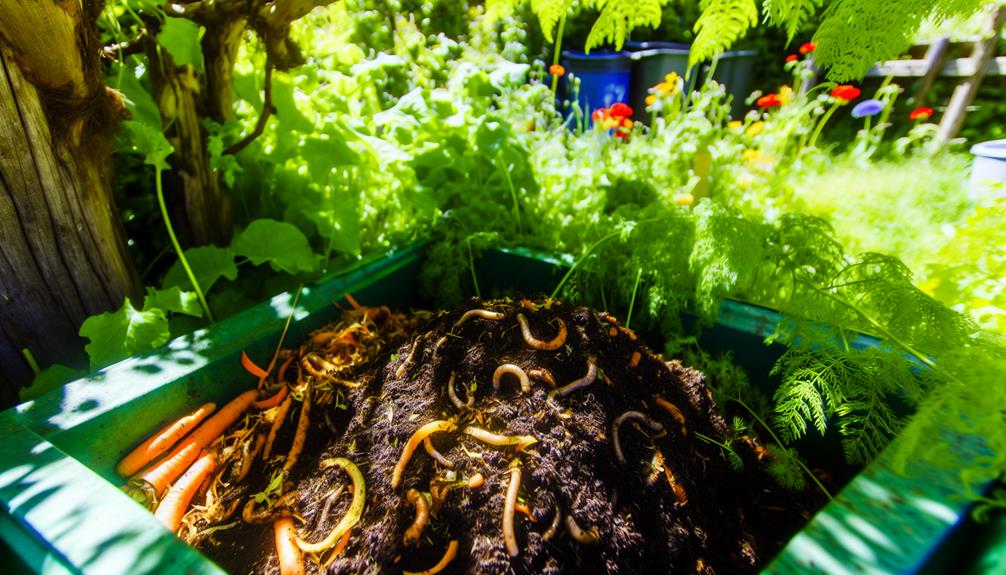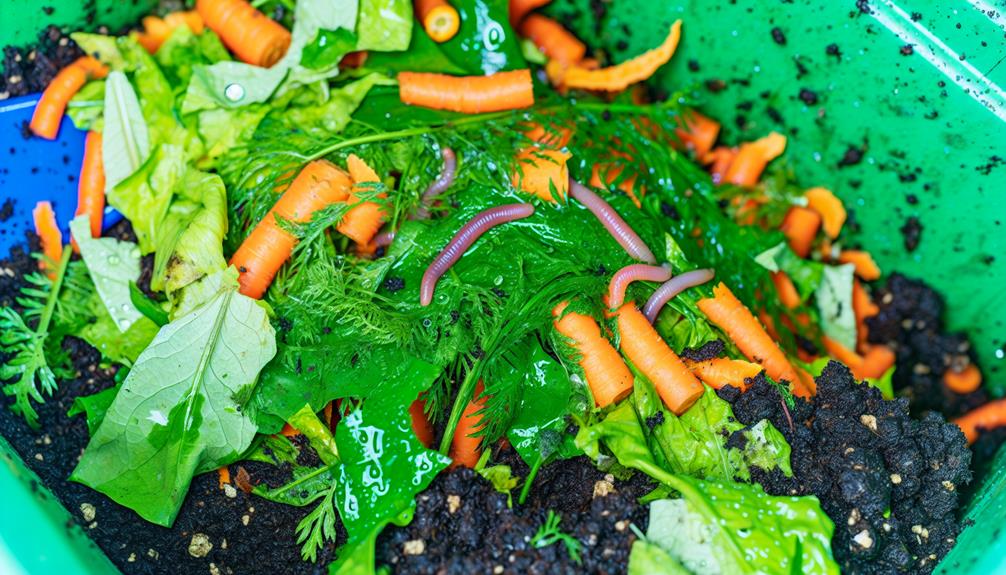

You can absolutely compost carrot peels! They’re fantastic for enriching your soil with essential nutrients, speeding up the composting process due to their high nitrogen content. To get the best results, chop the carrot peels into smaller pieces for quicker decomposition, and balance them with brown materials like dried leaves.
This combo creates the perfect composting environment, fostering a healthy breakdown process and producing nutrient-rich compost. Incorporating them with other food scraps will enhance your soil even more, promoting healthier plant growth. Stick around to learn how to perfect your composting strategy and make the most of your kitchen waste.
Composting carrot peels offers numerous benefits, from speeding up the composting process to enriching your soil with essential nutrients. When you add carrot peels to your compost, you’re not just reducing kitchen waste; you’re also creating a sustainable way to improve your garden.
Carrot peels decompose quickly, in just 2-4 weeks, providing a rich source of nitrogen with a C:N ratio of 12:1. This high nitrogen content helps balance the compost and enhances the breakdown of organic matter.
By composting carrot peels, you divert waste from landfills, reducing your environmental impact. The nutrients from the peels add essential elements to the soil, fostering healthier plant growth and making your garden thrive. Embrace composting and contribute to a greener planet!
To prepare carrot peels for compost, start by cutting them into smaller chunks to speed up decomposition. This simple step ensures your carrot peels break down quickly, usually within 2-4 weeks.
Adding the green parts of the carrot, including peelings, enriches your compost with essential nutrients. Remember to balance these green materials with brown materials like dried leaves or paper. This mix is vital for creating an ideal composting environment.
Also Read: Can You Compost Baking Soda?
Establishing ideal composting conditions guarantees that your carrot peels break down quickly and efficiently. To compost carrot peels effectively, you need to maintain a proper balance of carbon and nitrogen.

Carrot peels, being green material, provide nitrogen, so pair them with carbon-rich brown materials like dried leaves. Cutting carrot peels into small pieces speeds up the decomposition process, allowing them to break down within 2-4 weeks.
Mixing in other food scraps helps create a diverse nutrient mix, fostering an environment where microbes thrive. Turning your compost pile regularly ensures good aeration, further aiding decomposition.
Combining carrot peels with other kitchen scraps like vegetable trimmings and coffee grounds creates a nutrient-rich compost mix that decomposes quickly. Mixing carrot tops, peels, and other green materials with brown items like leaves balances your compost pile. The process of brown and green composting ensures your pile has the right mix, enriching your soil with valuable nutrients.
| Green Materials | Brown Materials |
|---|---|
| Carrot Peels | Dried Leaves |
| Carrot Tops | Paper Shreds |
| Vegetable Trimmings | Straw |
| Coffee Grounds | Wood Chips |
Also Read: Can You Compost Barbecue Sauce?
Chopping carrot peels into smaller pieces can greatly accelerate their decomposition in your compost pile. This simple step increases the surface area, making it easier for microorganisms to break down the organic materials.

To speed up the process, incorporate these tips:
Also Read: Can You Compost Alcohol?
You don’t have to throw away carrot peels; they can be incredibly useful in your kitchen and garden.
Use them to make a rich and flavorful homemade vegetable broth that enhances your soups and stews.
Additionally, carrot peels can be composted to create a natural plant fertilizer, enriching your soil with essential nutrients.
Turning carrot peels into homemade vegetable broth is a fantastic way to boost both flavor and nutrition in your dishes. Instead of tossing those nutrient-rich peels into the compost bin, you can use them to create a delicious base for soups and stews. This practice not only helps reduce food waste but also promotes sustainable cooking.
To make your own broth, gather:
Boil the vegetable scraps in water for about 30 minutes, then strain the liquid. You’ll end up with a tasty, nutrient-dense broth that enhances any recipe.
Embrace this simple yet impactful way to make the most out of your kitchen leftovers.
Carrot peels make excellent natural plant fertilizers, providing essential nutrients to enrich your garden soil. By composting carrot peels, you can transform kitchen scraps into a valuable plant fertilizer, enhancing the health of your garden.
The decomposition process releases potassium, nitrogen, magnesium, and calcium into the soil, creating a nutrient-rich environment. This practice isn’t just great for your plants; it’s also an environmentally friendly and sustainable gardening practice.
Recycling kitchen scraps like carrot peels reduces waste and supports the ecosystem. Imagine the satisfaction of seeing your plants thrive, knowing you contributed to a sustainable cycle.
Join a community of gardeners who cherish and protect the environment by using carrot peels to nourish your garden.
You shouldn’t compost oily vegetables, onions, garlic, cruciferous veggies, starchy vegetables, or tomato and pepper plants. They can slow decomposition, deter beneficial organisms, produce strong odors, attract pests, or spread diseases in your compost.
Yes, carrot peel is great for plants! By composting them, you’re enriching the soil with essential nutrients like nitrogen and potassium. This helps boost plant growth, photosynthesis, and fruit development. It’s a sustainable gardening practice you’ll love.
You should compost carrot peels. They decompose quickly, add valuable nitrogen, and improve soil health. You’ll help the environment by reducing waste and enjoy a thriving garden. Join the community of eco-conscious gardeners today!
Yes, you can put carrots in the compost bin! By composting them, you’ll reduce waste, enrich your soil, and contribute to a healthier environment. It’s a simple way to make a positive impact and feel connected.
You can absolutely compost carrot peels, and it’s a fantastic way to enrich your soil! By preparing the peels properly and combining them with other kitchen scraps, you’ll create a nutrient-rich compost.
Guarantee ideal conditions by maintaining the right moisture and aeration, and you’ll speed up decomposition. Not only does this reduce waste, but it also benefits your garden immensely.
So, start composting those carrot peels, and watch your plants thrive!
